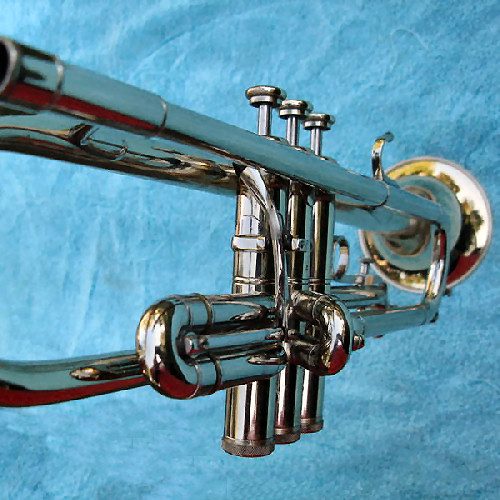
Introduced in 1959, the Reynolds Argenta trumpet is a large-bore trumpet made of solid nickel silver, available in models with and without a first-valve tuning trigger.
The Argenta line of instruments (trumpet, cornet, trombone) were developed around the time that Reynolds created nickel-silver versions of their Pottag and Chambers model French horns. With the same specifications as the large-bore Contempora trumpet, the nickel-silver Argenta and bronze-alloy bell Contempora models offer proficient trumpet players a choice of tonal alternatives to traditional yellow brass.
1959-1961
Roth-Reynolds (Cleveland)
Made of solid nickel silver. Designed by artists. Beautifully engraved. Exquisitely finished. Fast, dependable valve action. Remarkable, brilliant, penetrating tone quality, yet extremely full and rich. Try it — you will be amazed and convinced. Built in large bore only. Furnished with striking modern Gladstone case.
Model 44
B♭ trumpet, no first-valve trigger
Bore: .462"
Bell: 4-5/8", nickel silver
Length: 21½"
Materials: solid nickel silver
Finish: clear lacquer finish
1961-1964
RMC-Reynolds (Cleveland)
Sometime after Richards Music purchased Reynolds in 1961, the product catalog was renumbered. The old numbers were replaced with a new scheme that reflected the type of instrument. To the best of knowledge, the instruments did not change, just the model numbers.
Made of solid nickel-silver, this model produces the rich "dark" type of tone and unique response that more American professionals are beginning to find preferable to inherent brass brilliance. This is an open-blowing instrument for developed musicians. Optional first valve trigger.
1964-1973
Reynolds (Abilene, Fullerton)
When Reynolds moved operations to Abilene, Texas (and then to Fullerton, Calif., with Olds), there were slight adjustments to the model specifications. The Argenta model was discontinued in 1973 and its place in the 1974 Reynolds catalog was taken by the nickel-plated Onyx trumpet.
The Argenta Trumpet has the same distinctive characteristics as that of the Contempora, except that it is solid nickel-silver. This feature provides the trumpet player with a ‘dark’ tone, rather than the usual sound of brass brilliance. Fast-action valve pistons offer quick response. Available without first-valve trigger (TU-29) at lower cost.
NOTES
According to Reynolds’ trademark application, the Spanish word "Argenta" means "silver." It is a form of the verb argentar and more accurate translations might be "to silver plate" or "to give a silvery shine to." The Argenta line of horns were some of very few band instruments, other than French horns, made completely of solid nickel silver.
Despite its close appearance, there is no actual silver in nickel silver. Nickel silver, also known as German silver or neusilber, is an alloy of copper, zinc and nickel. A representative alloy mix contains 65% copper, 17% zinc and 18% nickel (compared to 80% copper and 20% zinc for standard yellow brass). Nickel silver has similar characteristics to brass, but is harder and stiffer, making it a durable alternative often used on high-wear areas of a horn, including valve casings, hand grips, tuning slides and trim.
Instruments made of solid nickel silver tend to have a darker, clearer tone compared to standard brass alloys. Nickel silver emphasizes the lower and higher overtone series, resulting in a sound that resonates very clearly in the corresponding registers. Nickel silver horns also tend to project more dramatically than other brass alloys and can easily throw an ensemble section out of balance without care; they are often used where a homogeneous section balance isn’t emphasized, e.g. as a soloist instrument or in a small mixed-instrument horn line. That said, many have found satisfaction using Argenta instruments within big band groups and other similar settings.
The purpose of this website is to preserve the history of the F. A. Reynolds Company and the distinctive qualities of its brass instruments. Contempora Corner and contemporacorner.com are not related or associated in any way to the former or current F.A. Reynolds Company.
Copyright © 2004-2024 ElShaddai Edwards. All Rights Reserved. Terms of Use.

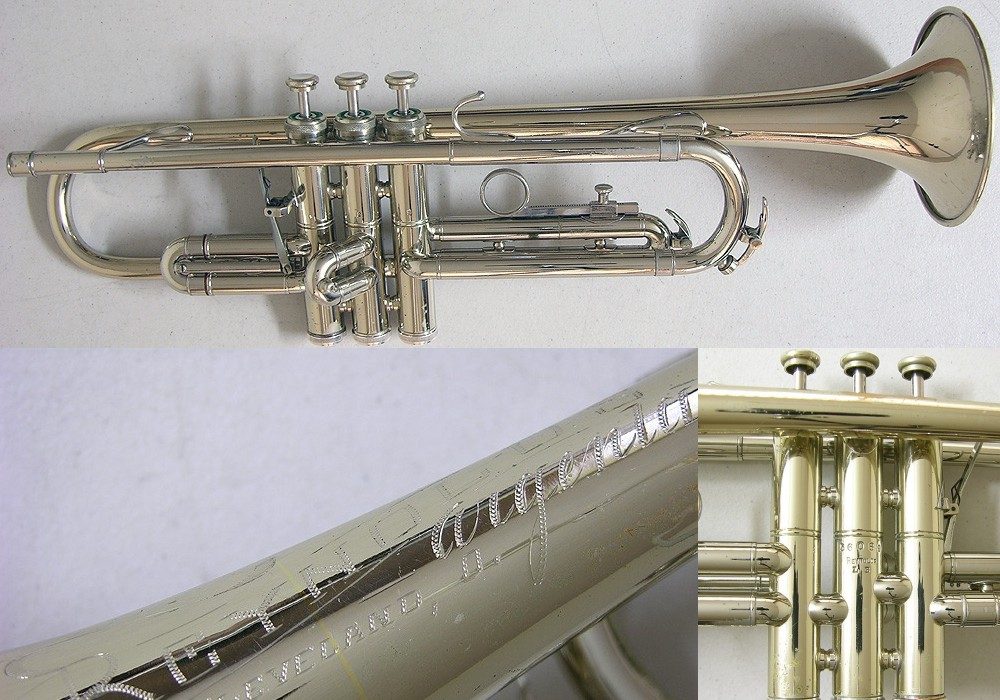
![Model 45 [SN 56089]. Photos used with permission from Lauderdale Wind (eBay Member: algee2).](https://contemporacorner.com/wp-content/uploads/2009/01/056089.jpg)
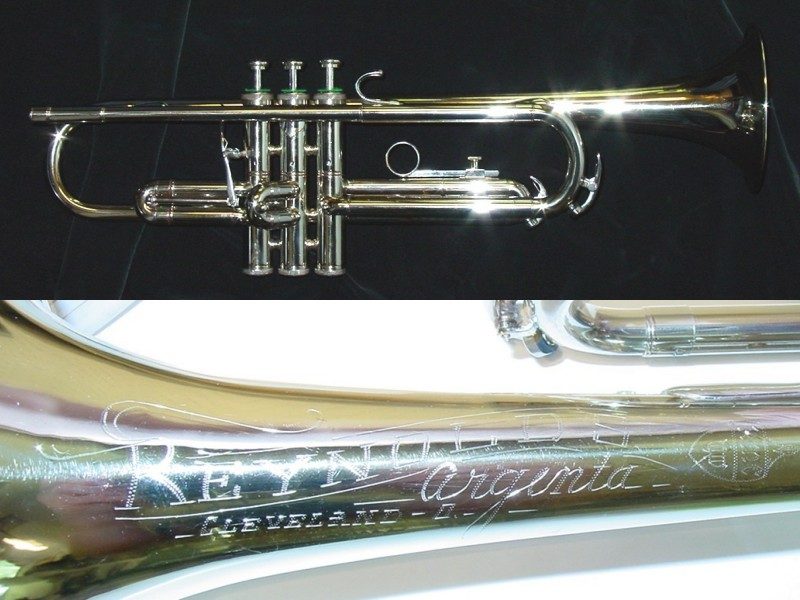
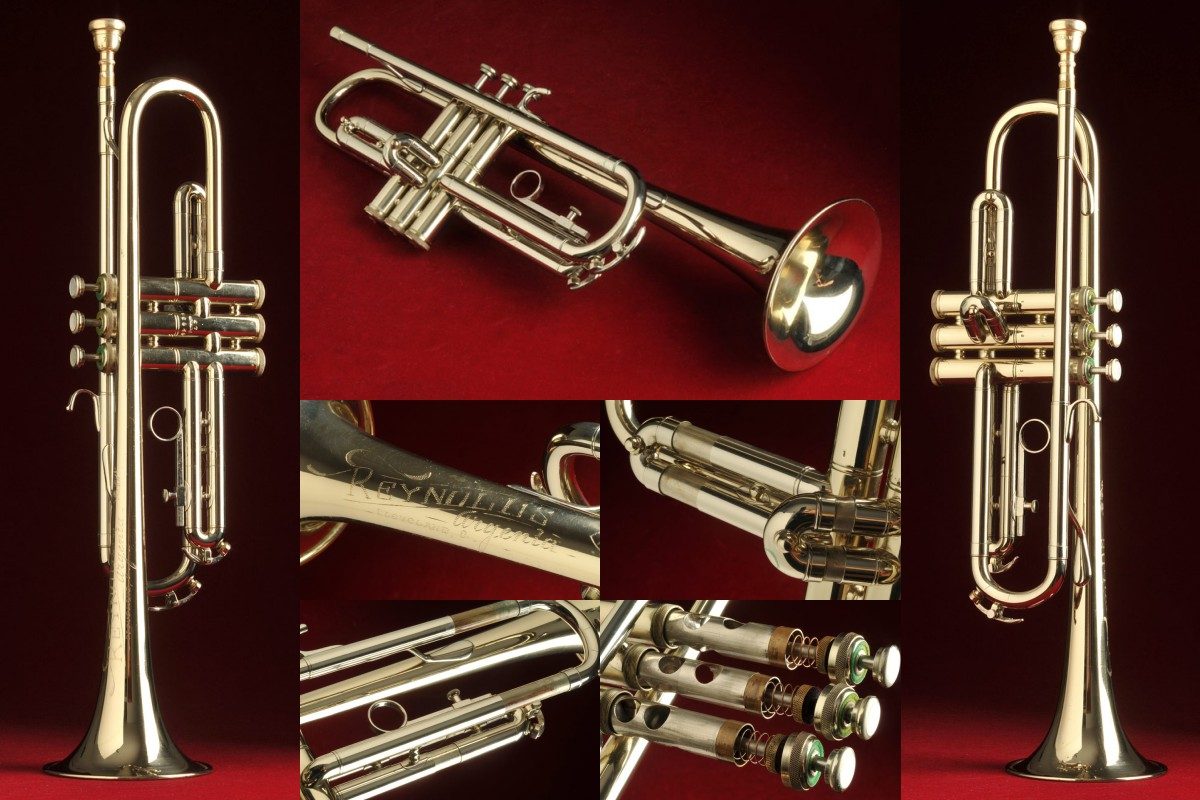
![Model TU29 [SN 062638]. Photos courtesy of eBay seller: wideangleman.](https://contemporacorner.com/wp-content/uploads/2009/01/0626381.jpg)
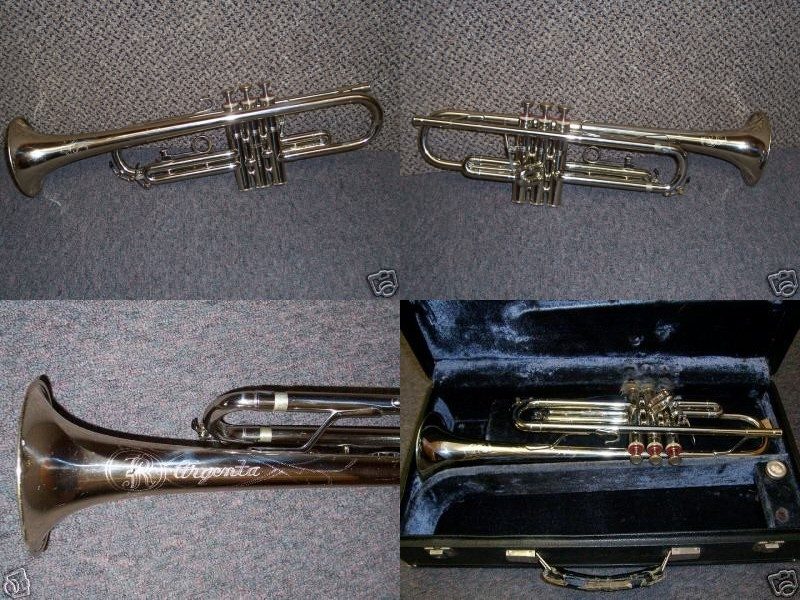
![Model TU-26 [SN 231860]. Photos used with permission from eBay Member: larry2174.](https://contemporacorner.com/wp-content/uploads/2009/01/231860.jpg)
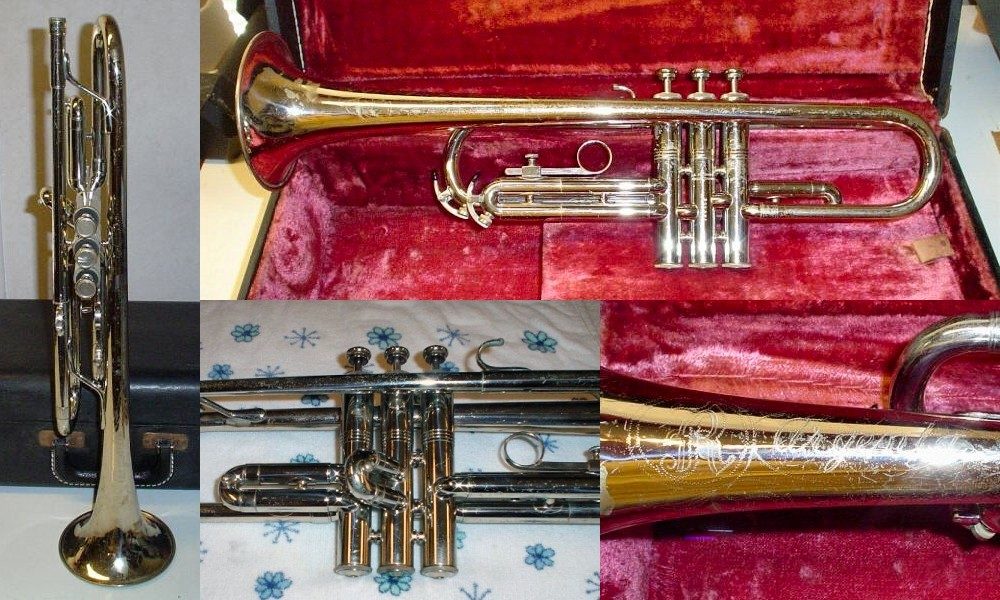
![Model TU-29 [SN 251xxx]. Photos used with permission from Dick White (eBay Member: dwdwdw888.](https://contemporacorner.com/wp-content/uploads/2009/01/251xxx.jpg)